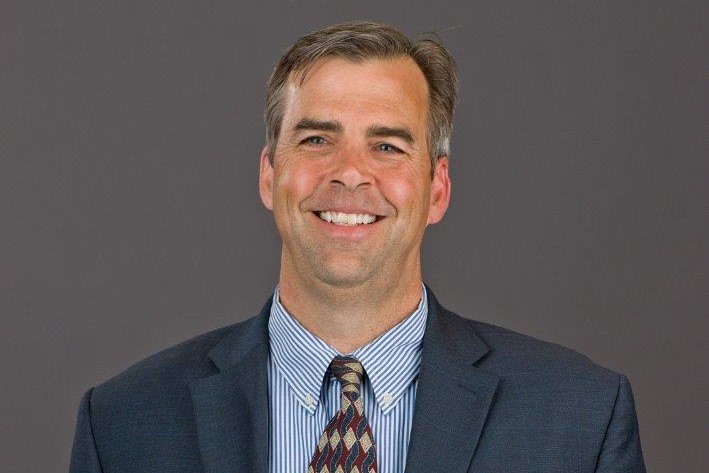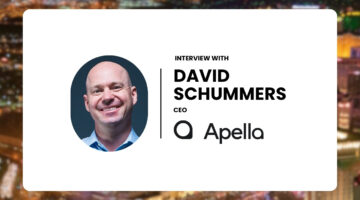
Signaling proteins called cytokines can trigger a powerful anti-cancer response, but the challenge of cytokine therapy is keeping that effect from going beyond the tumor. Avenge Bio’s technology can elicit a potent but targeted cytokine response in a different way than other biotechs working in this increasingly competitive sector of drug research. Ovarian cancer is the biotech’s first target, and the startup has emerged from stealth with $45 million that will support plans to bring its lead drug candidate into human testing later this year.

Transforming the OR: CEO Reveals Game-Changing AI Tech for Better Efficiency
How Apella leverages technology to increase OR efficiency.
The company’s recently announced Series A round of financing was led by Perceptive Xontogeny and CAM Capital.
Like many of the biotechs pursuing cytokine therapies, the focus of Natick, Massachusetts-based Avenge is a cytokine called interleukin 2 (IL-2). Secreted by activated T cells, this signaling protein plays a role regulating various immune cells. In cancer, IL-2 stimulates immune cells to respond to tumors. Engineered versions of IL-2 have been available for decades as a cancer immunotherapy, but with limitations. These therapies don’t last long in the body. Also, while engineered IL-2 elicits an immune response to cancer cells, it also causes toxic effects in healthy cells as it circulates throughout the body. Many of the companies developing new approaches to IL-2 are engineering versions of the cytokine that circulate systemically but offer a more targeted and durable effect.
Avenge Bio’s experimental treatment is a cell therapy that’s administered locally. The company works with immune effector cells, a type of cell found throughout the body that responds to injury by producing cytokines. These cells, which are engineered to produce IL-2, are encapsulated in a polymer that controls the dosing and the production of the cytokine, said CEO Mike Heffernan, who is the former chief executive of pain drug biotech Collegium Pharmaceuticals. The therapy is administered by implanting these engineered cells at the site of the tumor. Because those cells don’t circulate systemically, Heffernan said Avenge’s therapy avoids sparking toxic effects throughout the body. He added that this approach will enable clinicians to give patients higher, more powerful doses.
“You’re not getting the off-target effects that you get if you give it systemically,” he said. “The idea is you decrease the potential toxicity at much higher doses than you could ever get systemically.”

Integrating GLP-1s: How Berry Street is Redefining Nutrition Care
Richard Fu details the company's approach to nutrition therapy and strategy for patients using GLP-1s.
Avenge’s lead drug candidate is AVB001. Its origins are personal to Heffernan, whose wife was diagnosed with ovarian cancer in 2015. He said that her cancer responded to the standard of care, which is debulking surgery followed by chemotherapy. But he noted that ovarian cancer patients whose disease does not respond to standard of care or comes back following initial treatment have few therapeutic options and he was motivated to find new ones.
Heffernan’s quest for alternative ovarian cancer treatments led him to the work of Robert Edwards, whose research at the University of Pittsburgh includes ovarian cancer. Edwards had tested IL-2 dosed into the peritoneum, the tissue lining the abdominal cavity and pelvic wall. Heffernan said that while Edwards’ research showed local administration could work in ovarian cancer, producing responses in six of 24 patients, it was done with a commercially available IL-2, an engineered version that has durability and toxicity limitations.
Edwards had collaborated with Omid Veiseh, a Rice University professor of bioengineering whose research includes the delivery of therapeutics, Heffernan said. Veiseh had developed a way to encapsulate cells and Avenge’s technology, called LOCOcyte, was licensed from Rice. The company uses that technology to encapsulate the immune effector cells that produce IL-2. Heffernan said that Avenge has preclinical data in monkeys showing that these cells could be implanted in the peritoneal cavity and kept out of systemic circulation. Furthermore, the studies showed that this approach yielded local and systemic immune responses without sparking systemic toxicity.
Pursuit of better IL-2 immunotherapy is drawing interest from a growing number of biotech companies that have reeled in substantial sums of cash in the past year. Werewolf Therapeutics, whose lead drug candidate is a version of IL-2 engineered to activate only at the site of a tumor and to last longer upon activation, raised $120 million from its IPO last spring. Asher Bio achieves its targeted approach by engineering the cytokine so that it only binds to the desired immune cell. Asher’s promising preclinical data proved compelling enough to spark a $108 million round of funding last September. Meanwhile, Xilio Therapeutics spares healthy tissue from the effects of its version of IL-2 with a “mask” that does not come off until it reaches the tumor microenvironment. Xilio went public in October, raising more than $117 million.
Though Avenge currently trails its IL-2 rivals, the startup’s different approach could have advantages. Heffernan notes that AVB001 sparks the production of human IL-2 rather than using an engineered version of the cytokine. Native, human IL-2 should offer more potency and a stronger immune response compared to engineered versions, he said. The immune response produced by Avenge’s cell therapy also lasts for 15 to 30 days—longer than what’s possible with infused IL-2 therapies, Heffernan said.
Longitude Capital, the seed investor that initially backed Avenge, also participated in the Series A round, which added new investors Rock Springs Capital and Pappas Capital. Heffernan said that the cash will support the planned Phase 1 development of AVB001 in ovarian cancer, as well as two additional programs. One of them will test AVB001 in lung cancers and the other preclinical program will test a cell therapy for IL-12 in pancreatic and ovarian cancers as well as other solid tumors.
LOCOcyte is a platform technology that can be used to produce other cytokines. Heffernan added that while the technology is an off-the-shelf-approach, it also offers the potential for some customization. For example, a patient might be dosed with IL-2 first, and then with IL-15 a month later. Alternatively, a patient might be given a dose that produces two different cytokines at the same time, or the encapsulated cells from a single dose might make different cytokines in sequence. Avenge is not pursuing those options now, but Heffernan said the technology makes them possible.
“If this concept works in ovarian cancer, producing high levels of native cytokines in proximity to the tumor, if that works it’s a very new concept,” Heffernan said. “If that works, then other programs that we have in pleural cancer, pancreatic cancer, have a high probability of working as well.”
Photo by Avenge Bio






